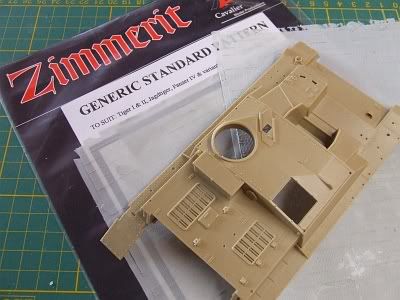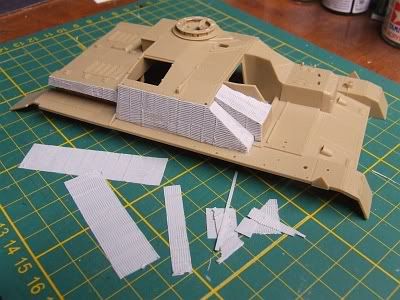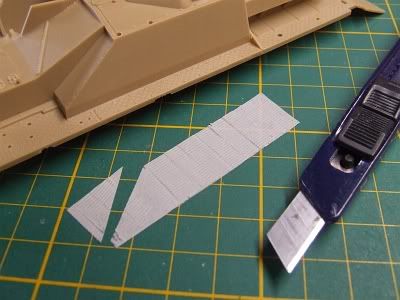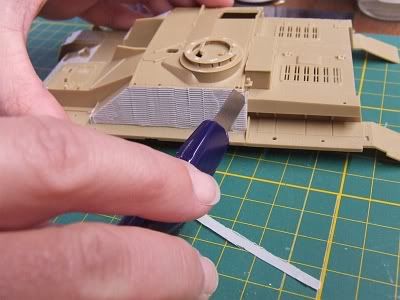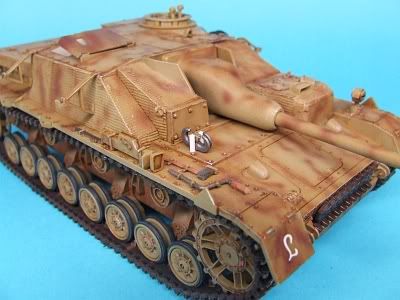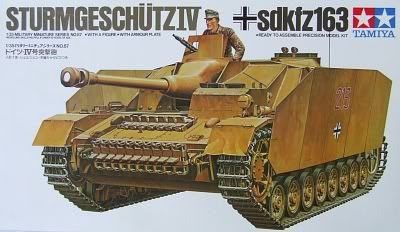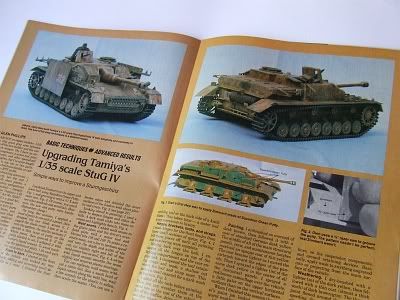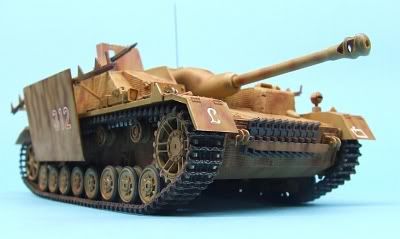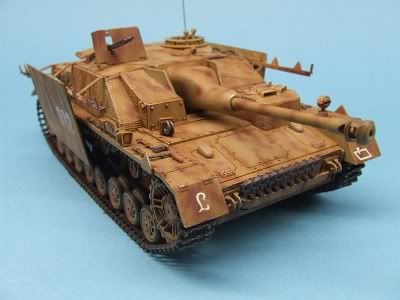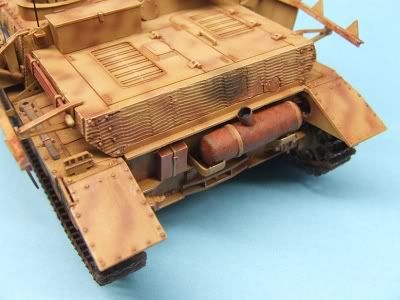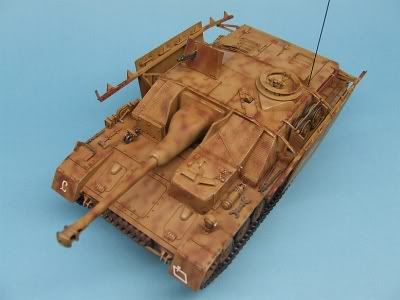
After a long and particularly busy hiatus (involving submission of a PhD thesis, beginning a new job and continuing with past endeavours), I find the itch to resume blogging about my favourite pass-time, and going by the traffic
World in Miniature has been generating, fresh posts will probably be most welcome!
In the last few months I've been very busy on the hobby bench, working on a round dozen projects. The trouble with spreading yourself so thin is that no particular project moves along very quickly even though you seem to be working as many hours. The great thing about having some older, unfinished projects is that you can get them off the bench with comparatively minimal work, and that was the case with Trumpeter's SA-2 Guideline missile kit.

I began this item probably two years ago, and did almost all the construction at the time. I was very happy with the fit, the cylindrical missile parts lined up very nicely and joints were dressed with the old superglue and adzing technique, always the best and quickest way. The alignment of the sixteen fins were more problematical, a right-angle jig would be a great help, as I doubt I got any of them at exactly 90 degrees. Still, 89 is close enough to satisfy the eye from most angles.
The thing that stopped me at the time was “Russian Green.” What shade is it? I have an old tin of Humbrol Russian Armour Green, which is no longer in the range, and I'm hoarding it. Besides, these days I try to paint in acrylics whenever I can, especially for armour subjects as it's not only far less toxic (and fairer to the family where the stink is concerned), it also lends itself perfectly to oil wash weathering afterward.

I did some research online, found my way to chat boards and such, and found that there were actually several shades of camouflage green in simultaneous use in the Soviet military, and any of them would be used in any particular context on the basis of what supplies were available. One common shade has been calculated to a Federal Standard value of 34098, and given that 34097 is a standard US shade, available in model paint ranges, I decided this was close enough for me. Tamiya XF-58 matches FS 34097, so that became my launcher shade.
Still, that alone was not enough to get me to pull the box off the shelf and get to it. As I'm sure I've mentioned in some previous post, I use a commercial compressed gas cylinder to power my airbrush, and I recently had a negative experience: for the first time in 15 years, I had a defective cylinder. I picked it up and seemingly overnight the fill had dropped from 15 bars to 10. I thought I had maybe failed to safety the main tap correctly, and heaved a sigh of frustration, but the next time I came to it the reading was 8, and I knew I'd safetied it properly that time. I talked to the company and they agreed to exchange it (they checked it and my gauges and the tank was definitely leaking). There was a weekend in the way, however, so I did some spraying and tried to use up whatever air I had available. The SA-2 was one of the kits that got some long-overdue attention.

I sprayed the launcher's six subassemblies with a good coat of XF-58, then I could do the standard armour weathering techniques I've developed. The big idea with this kit is that the launcher and missile are, literally, two different kits. In Soviet markings the installation is typical of the air defence settup found in North Vietnam, and this offers interesting finishing possibilities. The launcher stood in the tropical heat, dust and rain of Vietnam for years, and despite maintenance it would suffer the extremes of climate. Naturally, it would display rust and dust, and general dirt, just like any piece of heavy equipment. The missile, however, would not, being transported to the launcher site, loaded and fired long before weathering could set in. Also, the missiles themselves probably received more protection from the elements than the launchers.
So, I pursued them as separate projects. The missile was a painting experiment also. The pale grey shade used on the missiles seems to have no Western equivalent, so I mixed it. It was not the flat camo of the launcher, but either gloss or semigloss. I've had problems spraying gloss, and was not convinced the missiles were full gloss anyway, so I mixed 50% X-2 Gloss White with 30% XF-2 Flat White and 20% XF-66 Flat Light Grey. On reflection the finish is not quite bright enough and the shade not quite light enough, next time I build one I'll raise the gloss white to 60% and drop the grey to 10%, which should be a better mix. Nevertheless, I'm happy with this one, the grey certainly looks pale against the launcher green. Weathering was kept to a minimum, a thin black oil pinwash around raised details and recessed panel lines simply to make the structures visually 'pop.'

The missile is covered with stencil decals, more than forty of them. Many of them group adjacent Russian data placards, and they can be fiddly: I mangled only one decal in the process, and decided for ease to separate out elements from one or two others, which both extended the time involved and simplified getting a correct positioning. I was still decalling as I wrote the first draft of this post.
Speaking of decals, Trumpeter's printer, Cartograf, in Italy, have done a remarkable job on them. I don't think I have ever seen kit decals snug down into the surface so tight, and with carrier film that literally vanished against the lustre of my paint mix. The dried decal transparent areas are faintly lighter than the background, that's the only thing that gives them away. Placement instructions could have been more explicit, though. There is one interesting gaff, one of the red stripe markings that circles the body, just back of the juncture to the nose, is incorrect. Under a magnifying glass you can see that, instead of Russian stencil data, it says in English “NO PHOTO SORRY” – presumably a notation from the research team during creation of the decal sheet which, as it was not in Chinese, accidentally made its way through quality checking all the way to manufacture. Having omitted this one, I used a few bits of stripping from it to help repair the mid-body wrap-around decal that I mangled somewhat.

Final details involved spraying a grey-black mix to simulate the scorching of the rocket efflux on the blast deflector, brush-painting inside the rocket motor with a dark metallic enamel, fitting a few tiny parts on the launcher, including a few that fell/broke off during handling, then I could get some MiG “Vietnam Earth” pigment onto the launcher. This is good stuff! I can't wait to apply it to some Vietnam-era US armour.
Mating the two stages was an interesting job. A snug fit to start with, the paint on the alignment runners made it extra-snug, so I worked the boost stage carefully onto its guide, then slipped the upper stage onto its own guide and glued them together actually on the ramp.

It's the only kit I've built in many years which uses every last part and decal: there are no alternatives provided. However, three small decals, 8, 9 and 15, don't appear in the instructions: 8 and 9 are the starboard side counterparts of 7 and 10 and go at the base of the small aft fins on the second stage. 15 I haven't spotted anywhere.
All in all, this was a very pleasing model that built well and looks sharp on the shelf. I'm not sure if it's still in production but examples change hands on eBay for reasonably attractive prices these days. As a companion to Revell's re-released Nike Hercules missile, a similar vintage and role of weapon, and in fairly close scales too, it makes a most interesting display of Cold War technology.
PS: Yes, a part fell off the launcher and was not reattached before I did the photos, a sharp eye will spot the absence in the photos above. So, sue me...

































